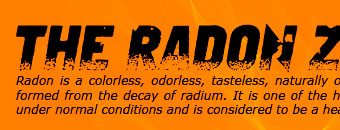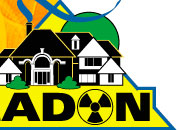 |
 |
 |
||||
|
||||||
| Call: 417-844-0942 | ||||||
|
»Moisture and Density "Nuclear" Gauges Used in Road Construction This page descibes how radioactive material is used in moisture and density gauges. Overview Quality control is an important aspect of any construction project. Building roads is no exception, and the moisture content and density of the materials used are very important. Gauges containing radioactive sources are used for determining the density of asphalt, soil, aggregate (usually gravel or crushed rock), and concrete as well as the moisture content of the soil or aggregate. These gauges work by measuring either the "backscatter" or the "direct transmission" of radiation directed at a material. "Backscatter" is the amount of radiation that is deflected by the material and is measured by placing the gauge on the surface of the material. "Direct transmission" is the amount of radiation that passes through the material and is measured by drilling a hole in the material and inserting the gauge. Various kinds of sources are used in moisture and density gauges, and each gives off specific types of radiation. One source often used is cesium-137, which emits both beta and gamma radiation. Another is a compound of americium-241 and beryllium, which emits neutron radiation. (Although americium-241 emits alpha radiation, when mixed with beryllium (a non-radioactive metal), the mixture emits neutrons.) The radioactive sources in the gauge are surrounded by shielding. It is only when the gauge is mishandled or damaged that it becomes a significant radiological hazard to the operator. Extensive experience with these gauges over many years indicates that radiation exposure to workers is generally low and that accidents involving the gauges are infrequent. When these gauges are used properly, radiation exposure of the general public is not an issue. Nuclear gauges containing licensed radioactive sources must be disposed of properly. They must not be treated as ordinary trash, recycled as scrap metal, or abandoned. Contact the manufacturer or your state radiation control program for disposal instructions. Some manufacturers also accept gauges for disposal. |
|
|||||